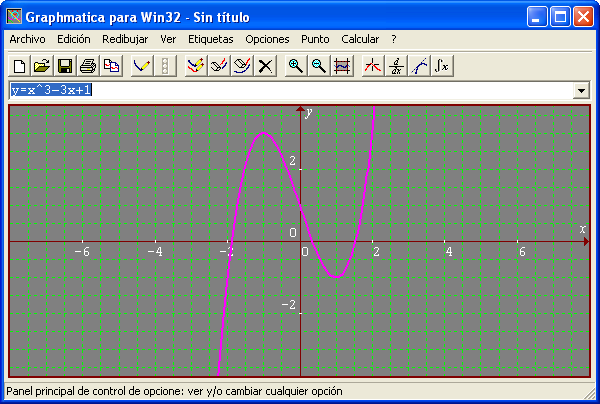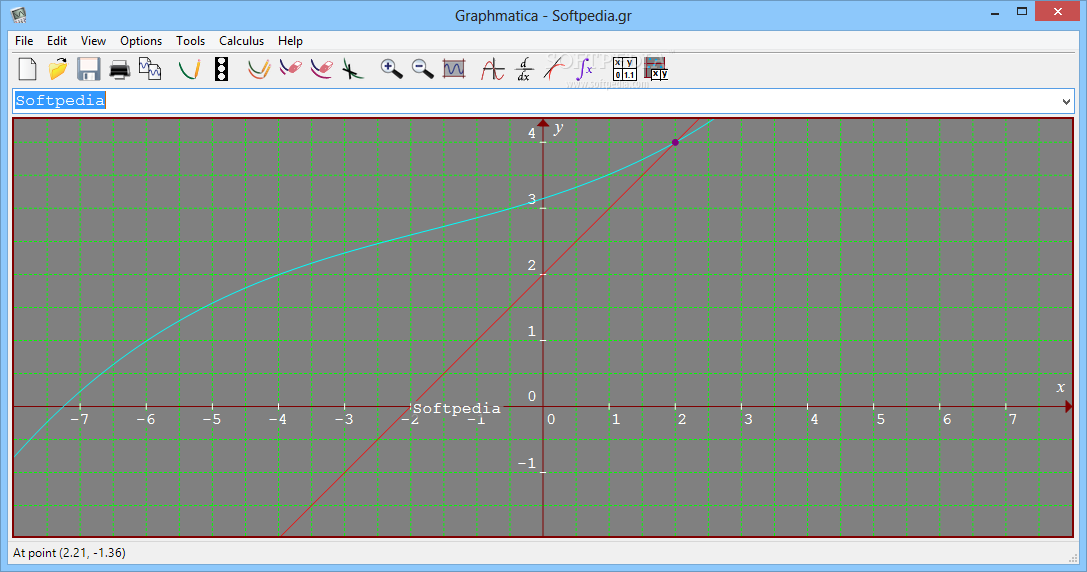

For instance, y = sinx cosx now parses as y=(sin x)*(cos x) rather than y=sin(x*cos x). Adjusted associativity of implied function parameters to assume that a factor which contains another function call was meant to multiply the first function call, not the function parameter. The single shared point is now evaluated to see if it is an intersection or not.ĥ. Fixed bug which caused Find Intersection on two curves with only a single point of their domains in common to display a spurious "Cannot solve this equation using Newton's method" error. Fixed bug which could cause the "Guess for off-screen intersection" entered in the Find Intersection dialog box to be ignored.Ĥ. Fixed a rare memory corruption issue in curve fitting code.ģ. Fixed y=x^(-(2/3)) to be correctly identified as an even power, so it draws both sides of the graph.Ģ. Each press of this key combination will move to the next window in sequence until you cycle back to the starting point.1.
#Graphmatica pictures windows
You can switch the keyboard focus among the windows (equation editor, Point tables/Data Plot editor, and the various floating dialog boxes) using the standard Windows shortcut Ctrl+Tab shortcut key Tab.

The Point Tables window (toggled on or off by the Point Tables item in the View menu or the toolbar) shows the coordinates of selected points from the last graph(s) drawn with the option on. So as not to obstruct the graphs, any message that does not require immediate attention or input will be posted in the status bar. The bottom of the main window holds the status bar, which displays help messages from the menus, the result of the latest action completed, the status of a selected equation, and during graphing, the equation being graphed, any warning error messages (if desired), and the pause message. You can also select equations just by clicking on their graphs! To retrieve an old equation, use the up and down arrow keys to scroll through the list one equation at a time or click on the icon to the right of the edit field to drop down the list box for mouse selection (if there are more equations in the queue than fit in the box, it will have a scrollbar so you can see them all). If a previous equation is highlighted on the input line, just start typing to start from scratch or press a direction key to clear the selection and edit it. If you want to enter a new equation, just type it in and press enter or click Graph to graph it. The Redraw Queue combobox serves two functions: first to accept input of new equations (you can type in a new equation at any time as long as you aren't currently graphing one) and second to retrieve old equations from the queue. The toolbar at the top of the window contains buttons that allow you to perform the most common commands with one click of the mouse.

Graphmatica Help - Elements of the Display


 0 kommentar(er)
0 kommentar(er)
